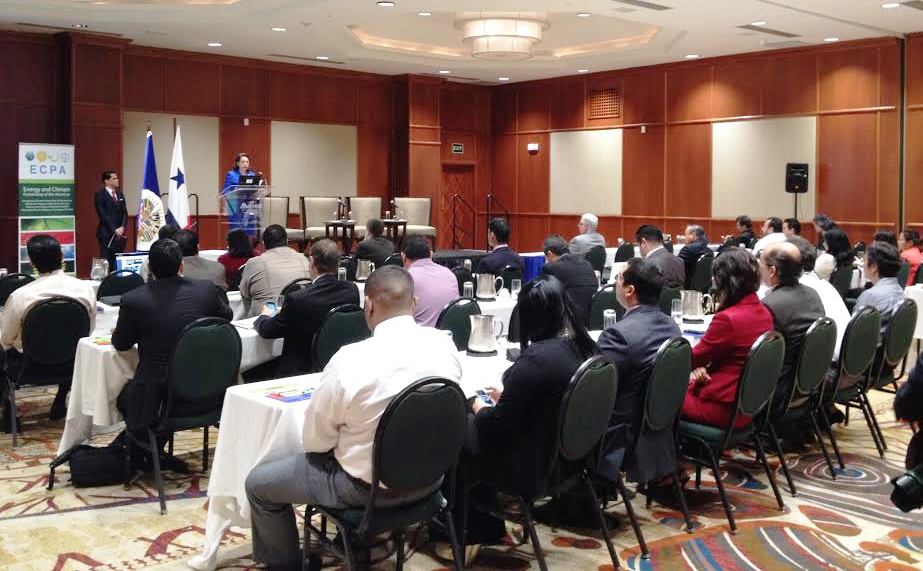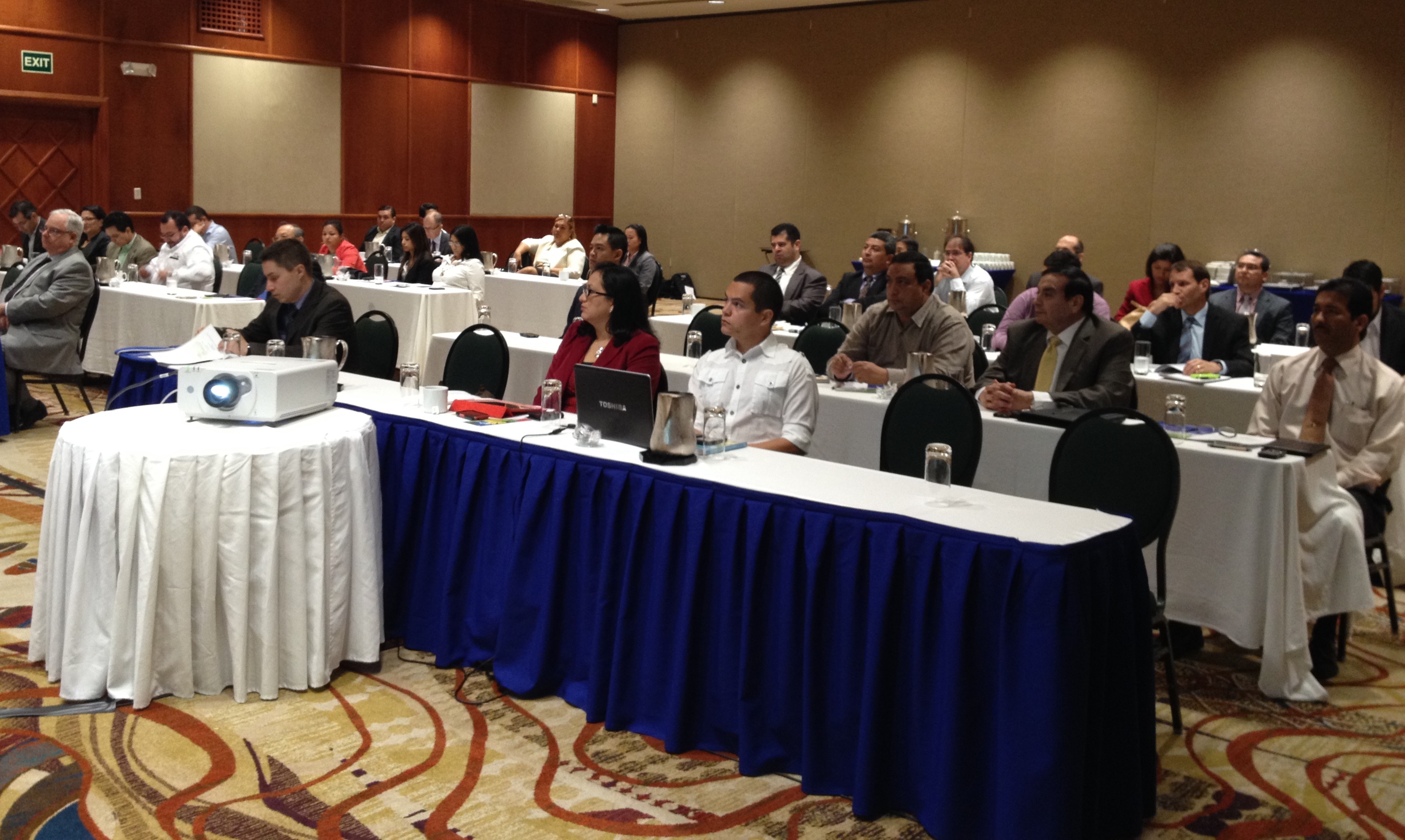
 In opening remarks, Ambassador Abigail Castro de Pérez, OAS representative in Panama, expressed appreciation for the important and unquestioned support of the Government of Panama for the workshop, and discussed OAS efforts on energy and climate change issues. Castro de Pérez also invited all participants as well as the representatives of Central American governments in attendance to “exchange experiences to contribute to a more sustainable future.”
In opening remarks, Ambassador Abigail Castro de Pérez, OAS representative in Panama, expressed appreciation for the important and unquestioned support of the Government of Panama for the workshop, and discussed OAS efforts on energy and climate change issues. Castro de Pérez also invited all participants as well as the representatives of Central American governments in attendance to “exchange experiences to contribute to a more sustainable future.”
Mr. Fernando Díaz, Director of Electricity for the National Energy Secretariat of Panama, talked about the work of the ECPA, noting the hemispheric importance of this partnership that combines energy and climate. “This is a unique partnership,” said Díaz, referring to ECPA. He added that “we all need to work together to develop energy programs and enlighten people about their use.” Díaz said it was important to design and establish stable legal frameworks to encourage diversification of the energy matrix, in order to ensure energy supply. He described energy efficiency as the “fifth fuel,” arguing that about 27 to 40 percent savings would translate to $190 million to $282 million a year in savings in the productive sector alone. Díaz called on the region’s governments to work towards making the Central American energy sector more sustainable.
 During the workshop, representatives of Central American organizations involved in promoting urban sustainability and renewable energy and officials from Panamanian government agencies shared best practices geared towards promoting urban sustainability, particularly in transportation. Discussion also focused on how sustainable urban transport improves quality of life for residents and contributes to safer roads. These policies produce substantial energy savings, curb greenhouse gas emissions, and deliver a strong response to the challenges of climate change. Government representatives from Costa Rica, El Salvador, Guatemala, Honduras, Panama, and Nicaragua took part in the meeting. Mexico’s National Commission for Efficient Energy Use (CONUEE) also participated, sharing its experiences in implementing voluntary and mandatory energy efficiency standards in the residential, commercial, and industrial sectors.
During the workshop, representatives of Central American organizations involved in promoting urban sustainability and renewable energy and officials from Panamanian government agencies shared best practices geared towards promoting urban sustainability, particularly in transportation. Discussion also focused on how sustainable urban transport improves quality of life for residents and contributes to safer roads. These policies produce substantial energy savings, curb greenhouse gas emissions, and deliver a strong response to the challenges of climate change. Government representatives from Costa Rica, El Salvador, Guatemala, Honduras, Panama, and Nicaragua took part in the meeting. Mexico’s National Commission for Efficient Energy Use (CONUEE) also participated, sharing its experiences in implementing voluntary and mandatory energy efficiency standards in the residential, commercial, and industrial sectors.
The Central American region is currently a net importer of fuels. Pointing to the future of renewable energy in Central America, Marianela Herrera, Deputy General Manager of Empresa de Transmisión Eléctrica S.A. (ETESA) of Panama, said “Central America has the potential to meet 100 percent of its electricity needs with renewable energy, provided there are proper policies, incentives, and political support.” Herrera added that the region’s potential for geothermal energy is more than 20 times its current installed capacity and that, by itself alone, it could satisfy almost double the electricity demand in Central America until 2020. Herrera referred to the enormous potential that wind, solar, small-scale hydropower, and biomass hold for the region.
The workshop concluded with a panel discussion on financing for clean and efficient technologies. During this session, representatives from Banco General de Panamá, Development Bank of Latin America (CAF), and the International Finance Corporation (IFC) spoke about the principles on which their respective institutions structured financial services designed to support greater urban sustainability.
The Government of Panama is implementing a comprehensive energy policy to promote renewable energy and a more efficient energy sector. Through its bioethanol program, the Government of Panama saved about 355 million liters of gasoline in 2013, for example. These savings translated to about 221,000 tons of avoided carbon dioxide emissions, thanks to the use of bioethanol. Through its policies, the Government of Panama also seeks to promote greater electricity savings in the residential and commercial sectors by promoting a more rational use of air conditioning. It is estimated that setting air conditioner thermostats at 24 degrees Celsius could generate electricity savings of up to 3 percent. In terms of transportation, the government and the private sector invested $1,800 million to build Line 1 of the Panama City metro. Phase 1 of that stretch of nearly 14 kilometers could transport about 40,000 passengers a day, according to estimates.
Panama’s energy policy, which seeks to promote greater diversification of the energy matrix, has been making that country a regional benchmark. The ECPA is expected to support development and dissemination of this best practice.
 View Map
View Map